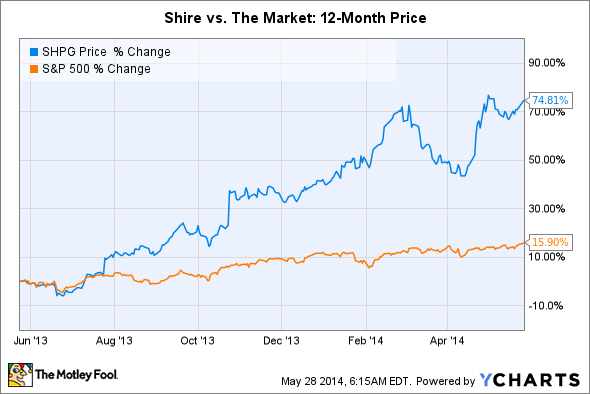The Dividend Adjusted PEG Ratio
Post on: 3 Июнь, 2015 No Comment

A Trick for Valuing Stocks with High Dividend Yields
The dividend adjusted PEG ratio is a way to factor in the dividend yield on blue chip stocks when valuing the multiple at which a company’s shares should trade. Kick Images / Photodisc / Getty Images
When it comes to investing in dividend stocks, some tools, such as the PEG ratio, don’t work well in the real world. To compensate, we need to use something known as the dividend adjusted PEG ratio.
For those of you who need a quick refresher, we talked about the PEG ratio, including giving examples of how to calculate it, in an article called Using the PEG Ratio to Find Hidden Stock Gems . In simple terms, the PEG ratio is a financial tool that takes the price-to-earning ratio. or P/E ratio as it is more commonly known, and adjusts it for the growth in earnings per share.
The purpose of the PEG ratio is to account for the common sense notion that you can sometimes pay a higher price for a business that is growing quickly, and still make a lot of money, than you can paying a lower price for a firm that has nowhere left to expand. The PEG ratio might help reveal that a young startup in Silicon Valley is a steal at 50x earnings, while an old steel mill is expensive at 8X earnings.
To calculate the PEG ratio, you use the following formula:
PEG Ratio = (Price Earnings Per Share) Annual Earnings Per Share Growth
In a purely rational world with reasonably stable interest rates and modest inflation. the PEG ratio of all stocks would be 1.00, meaning the P/E ratio would be equal to the growth rate of earnings per share. A stock that was growing profits at 10% would trade at 10x earnings. A stock that was growing profits at 25% would trade at 25x earnings.
The PEG Ratio Doesn’t Work for Stocks With Rich Dividends
Often, when a company is very large and profitable, it returns most of the earnings to its stockholders in the form of a cash dividend. This can result in a situation where the company appears to be growing slowly, but in addition to the earnings-per-share growth, stockholders are receiving large checks in the mail that they can spend, give to charity, or reinvest in additional shares of stock. When this is the case, the PEG ratio alone is not sufficient because it will appear that an otherwise attractive stock is significantly overvalued, which may not be true.
In these situations, the PEG ratio doesn’t work well. In fact, the odds are good that when you analyze most high quality, blue chip stocks such Procter & Gamble. Colgate-Palmolive. Coca-Cola. or Tiffany & Company. to name a few real-world examples, you are going to have to use the dividend adjusted PEG ratio, instead.
Calculating the Dividend Adjusted PEG Ratio
To calculate the dividend adjusted PEG ratio, investing legend Peter Lynch proposed a modification to the formula:
Dividend Adjusted PEG Ratio = (Price Earnings Per Share) (Annual Earnings Per Share Growth + Dividend Yield)
Let’s look at The Coca-Cola Company. Right now, the stock trades for $38.85 per share and has earnings per share of $2.05. The dividend is $1.02 per share, resulting in a 2.6% dividend yield. Value Line estimates the growth in earnings per share over the next 3-5 years will be 8%. You may agree or disagree with that figure, but for illustration purposes, we’ll use it in our scenario.
If you were using the regular PEG ratio formula, you would have calculated Coke’s PEG as:
Step 1: PEG Ratio = ($38.85 $2.05) 8

Step 2: PEG Ratio = 19 8
Step 3: PEG Ratio = 2.375
Is Coca-Cola really that overvalued? Had you paid attention to the cash you will be getting as a stockholder in the soda giant, which has very real value, you would use the dividend adjusted PEG ratio formula:
Step 1: Dividend Adjusted PEG Ratio = ($38.85 $2.05) (8 + 2.6)
Step 2: Dividend Adjusted PEG Ratio = 19 10.6
Step 3: Dividend Adjusted PEG Ratio = 1.793
In both cases, if the growth in earnings per share is accurately predicted, it would appear that Coke is not attractively valued. However, we can tell from the second set of numbers that the company, while certainly no steal, is much cheaper than the PEG ratio alone would have you believe.
Remember that a perfectly rational stock should have a PEG ratio or a dividend adjusted PEG ratio of 1.00 or less. There is one caveat: If you are buying a truly excellent business that you plan on holding forever, sometimes it can be worth paying a bit more for quality. In my own family, we used the Coca-Cola dividend reinvestment program to teach my youngest sister about investing. The business is so good that, on average, we expect it to compound nicely over the next 30, 40, and 50+ years. However, if you pay more than 2.00, you are probably not going to do very well in the long-run short of pure, dumb luck arising from unexpected growth that you failed to predict.
Why bother to learn this formula? Remember that the price you pay is paramount to the returns you ultimately earn. A great company can be a terrible investment if you spend too much to acquire your stake.














